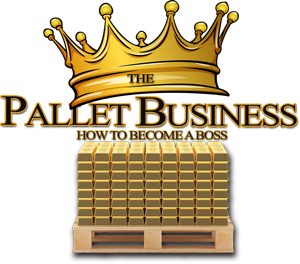What Are the Different Types of Wood Pallets?
When someone thinks of a pallet they often think of a flat transport structure made out of wood. No one thinks of any differentiating factors, because don’t all pallets look the same? The truth, however, is far from this.
Pallets come in a variety of shapes, sizes, materials, and designs. Different pallets are also used for different functions and purposes. The reality is that no two pallets will ever be alike. Each piece is unique in its own way.
At The Pallet Business, we specialize in everything about pallets. We’re sharing the different types of wood pallets and what makes them unique.
The Block Pallet
Block ballet, also known as a deck board pallet, is distinguished by cylindrical pillars that help to distinguish the bottom and top of the deck. It has a four-way entry, which means forklifts may access all four sides of the pallet. A typical block has 12 cylindrical wooden posts that give excellent stability, particularly at the top.
Block pallets are offered in a number of forms, with or without bottom boards. To maximize handling efficiency, this design incorporates both perpendicular and parallel stringers.
The Stringer Pallet
This pallet, as the name implies, uses stringers to provide enough support for the load it carries. Between the bottom and top deck boards are stringers that help carry the pallet's weight. When opposed to block pallets, these give more support due to the two boards that run on opposite sides of the pallets between the bottom and top decks. While this prevents entry from those two ends, it also gives it greater room to support the additional weight.
Stringer pallets come in 2 way and 4-way forms. The 2 way stringer pallets allows fork entry from 2 paths only. The 4-way stringer pallet is exactly similar to the 2-way pallet except that it has 4 access or entry points.
The Double Faced Pallet
The top deck is usually the only part of a pallet. There are, however, some pallets that include a bottom deck in addition to the top deck. Double-faced pallets are the latter, and they can be utilized with any side or face up.
The pallet’s bottom deck adds to its strength and helps distribute the load's weight evenly.
Reversible and non-reversible double-face pallets are available in the market or local warehouses. Reversible pallets can have products piled on either side. For storage and packing, non-reversible pallets often feature one surface with more densely packed planks.
The Solid Deck Pallet
Solid deck pallets, as the name implies, feature a continuous single huge sheet of plastic, wood, or metal with no gaps or holes. Their most distinguishing characteristics or qualities are their ease of cleaning and transportation.
Pallets like these are mostly used to move small items. Because they are created in a continuous flow with no gaps, they are great for transporting small things that would otherwise fall through the break in other types of pallets like plastic and metal.
While solid deck pallets are available in other materials such as plastic, wooden ones are easy to clean and transport. This makes them highly cost-effective and extends their lifecycle.
The Open Pallet
Pallets having gaps between the deck boards are known as open deck pallets. These pallets are lighter and less expensive. Smaller things, on the other hand, cannot be shipped since they will fall through the cracks.
Learn All About The Different Types of Pallets With The Pallet Business
If you are looking to get into the pallet business, or simply want to learn more about them, we have the perfect resource for you. Our online Pallet Business Training Course is packed with information about every aspect of this industry, from finding and sourcing pallets to selling them for a profit. Sign up today and gain access to all of our expert knowledge so that you can start making it today!
